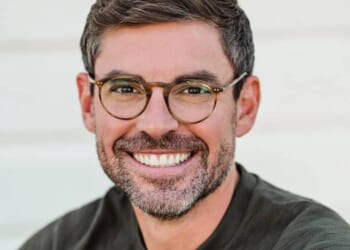Decades after the United States invaded Panama in 1989, Samuel Castañeda says the sounds and smells of that night – armored tanks rumbling, houses burning, and bullets flying around his neighborhood – still loom large in his memory.
Today, a new kind of offensive is on Panamanian minds, as U.S. President Donald Trump repeatedly threatens to wrest control of the Panama Canal back into American hands. His claims are bringing to the surface decades-old emotions about U.S. imperialism and foreign occupation.
But in a country beset by wide economic inequalities, many Panamanians are questioning what citizens have gained from managing the iconic trade route themselves.
Why We Wrote This
President Donald Trump’s threats to take back control of the Panama Canal have prompted some Panamanians to question how much benefit they have seen from 25 years of local ownership of the waterway.
On the one hand, this heated political moment has sparked widespread pride.
The locally run Panama Canal Authority has managed the canal successfully for the past 25 years, since the Americans pulled out, bringing investment, tourism, and wealth into the country.
It has also raised questions.
“Everything Trump’s saying is [nonsense]. I’m not taking him seriously,” says Mr. Castañeda, who has lived his whole life in the low-income neighborhood of El Chorrillo, the barrio at the heart of the 1989 U.S. invasion that ended with the capture of the country’s de facto dictator, Gen. Manuel Antonio Noriega.
But “Since the U.S. left Panama, the canal has earned” so much more money, he says. And yet “The majority of Panamanians don’t see … the canal’s wealth” impacting their lives.
A neutral canal
Most Panamanians are adamant that the canal, completed in 1914, will not return to U.S. control. And Mr. Trump’s threats generate responses ranging from disbelieving eye rolls to a presidential declaration that Mr. Trump is insulting Panama’s “dignity as a nation.”
The U.S. started building the canal in 1903, taking control not only of the waterway connecting the Pacific and Atlantic oceans, but also of the land on either side of the canal, which was known as the Canal Zone.
In 1964, Panamanian high school students walked into the U.S.-run zone and tried to raise a Panamanian flag alongside the U.S. Stars and Stripes. They were met by thousands of U.S. protesters, and a symbolic call for sovereignty turned into a bloody clash, sparking yearslong discussions about how Panama could take over the canal.
U.S. control over the canal “really was a [thorn] in U.S. relations … with Latin America” at the time, says Eric Farnsworth, vice president of the Americas Society/Council of the Americas in Washington. The dust had barely settled on the Cuban Revolution, and the idea that “Latin America was finding its voice to expel the imperialists became a very symbolic issue.”
The treaties that U.S. President Jimmy Carter signed with Panamanian leader Omar Torrijos in 1977, handing the canal over to Panama in 1999, guaranteed the canal’s neutrality as an international passage. That means that any ship, regardless of its country of origin, can use the canal.
Handing ownership of the canal to Panama ensured that the U.S. would be able to use the waterway while avoiding what appeared to be growing risks of nationalist attacks, Mr. Farnsworth says.
Where does the money go?
Since his inauguration, Mr. Trump has said that the U.S. should never have given up management of the canal, which he says Washington needs for “economic security,” and that it is being “operated by China.” In March, the Trump administration reportedly directed the U.S. military to develop options for the canal.
Panamanians are not amused by such reports. Protesters took to the streets ahead of Secretary of State Marco Rubio’s February visit, calling for sovereignty and waving Panamanian flags.
On a sunny morning in late March, locals and foreigners gathered at a viewing station at the Miraflores Locks visitor center, one of the first sections of the canal where boats enter the Pacific mouth of the waterway.
Jesús González, a Panamanian chemical engineer who arrived with out-of-town guests to watch boats move through the system of locks, says he is flummoxed by Mr. Trump’s threats to reclaim the canal. “The Panama Canal is Panamanian, and it will always be Panamanian,” he says.
It “isn’t just a canal,” says Rodrigo Noriega, a Panamanian political analyst. “It is the Panamanian identity. And it is key to the Panamanian economy.”
Canal receipts have contributed some $28.2 billion to the National Treasury over the past 25 years – nearly three times as much as the waterway paid the Panamanian government over the 86 years it was managed by the U.S. The income, accounting for about 10% of the national budget, is spent on subsidizing public utilities such as gas and water, and funding social programs.
Not a boon to poor Panamanians?
But despite the canal’s financial success, Panama today is one of the most unequal countries in Latin America. Although it is a key financial hub, it has struggled to reduce poverty, which varies widely. In urban areas, poverty hovers just below 5%; in rural, Indigenous areas, it climbs to 76%, according to the World Bank.
“Most Panamanians are living in survival mode; almost 40% of people live in … multidimensional poverty,” says Olga de Obaldía, executive director of the Foundation for the Development of Citizen Liberty, a nongovernmental organization in Panama City. “There’s only so much importance they can give to something they don’t feel is affecting their day-to-day lives,” like the canal or U.S. threats to take it back, she says.
That is why she is not surprised to hear some voices calling the canal the nation’s pride and joy while others argue that it does not matter who runs the canal because it does not serve them, either in American or Panamanian hands.
That’s a divide Mr. Castañeda and a handful of neighbors in El Chorrillo are looking to bridge. The hubbub over the canal in recent weeks has given their work, running community tours exploring the legacy of the U.S. invasion in El Chorrillo, new relevance.
Capturing General Noriega “was the excuse” for the invasion, says Efrain Guerrero, founder of Movimiento Identidad, a community-run educational NGO. But “There was a deeper cause: the canal,” he says of his belief that the U.S. wanted to dismantle Panama’s military so that the country would be dependent on the United States and its armed forces to protect the canal.
Some 70% of people who take Movimiento Identidad tours are Panamanian, Mr. Guerrero says. “We are trying to connect Panamanians with their identity.”
On the bustling streets of El Chorrillo, bullet holes dating from the U.S. invasion are still visible on lampposts and building facades. Locals share stories – of grandparents burning their army uniforms, fires ravaging whole blocks of wooden homes, and U.S. soldiers shooting civilians.
The hope is that if those who remember these events tell their children about them, younger generations will become aware of the United States’ not-so-distant role here, and Panamanians of all ages can build their identities far beyond the canal.











